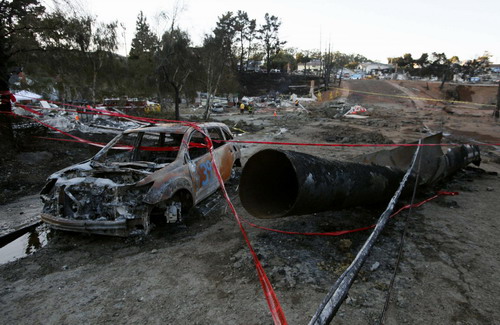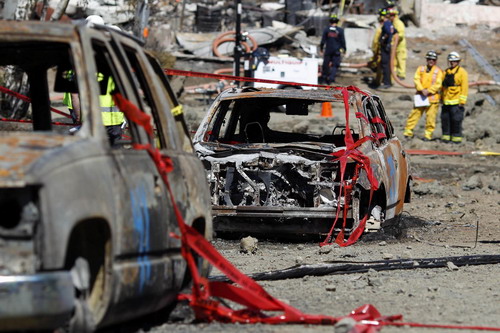-
News >World
Aging gas pipe at risk of explosion across US
2010-09-14 09:15The section of pipeline that ruptured was built in 1956, back when the neighborhood contained only a handful of homes. It is a scenario that National Transportation Safety Board vice chairman Christopher Hart has seen play out throughout the nation, as suburbs have expanded.
"That's an issue we're going to have to look on a bigger scale, situations in which pipes of some age were put in before the dense population arrived and now the dense population is right over the pipe," he said.
Thousands of pipelines nationwide fit the same bill, and they frequently experience mishaps. Federal officials have recorded 2,840 significant gas pipeline accidents since 1990, more than a third causing deaths and significant injuries.
"In reality, there is a major pipeline incident every other day in this country," said Carl Weimer, Pipeline Safety Trust's executive director. "Luckily, most of them don't happen in populated areas, but you still see too many failures to think something like this wasn't going to happen sooner or later."
Congress passed a law in 2002 that required utilities for the first time to inspect pipelines that run through heavily-populated areas. In the first five years, more than 3,000 problems were identified, a figure Weimer said underscores the precarious pipeline system.
Even when inspections are done and problems found, Kessler said, there is no requirement for companies to say if or what kind of repairs were made. And Weimer added industry lobbyists have since pushed to relax that provision of the law so inspections could occur once a decade or once every 15 years.
Other critics complain that the pipeline plans are drafted in secret with little opportunity for the public to provide speak out about the process.
The Pipeline and Hazardous Materials Safety Administration is the federal regulatory arm that enforces rules for the safe operation of the nation's pipeline system. Most state public utility agencies have adopted the federal rules and carry out inspections and enforcement.
But the system often relies on the pipeline operators like Pacific Gas & Electric to survey their own gas lines and to decide which pipelines are high-risk.
The American Gas Association disputes the notion that it cuts any corners and says the industry is subjected to stringent state and federal regulations.
"Safety is unequivocally the No. 1 priority for the natural gas transmission and distribution industry and always will be," spokesman Chris Hogan said. "The industry spends billions each year to ensure the safety and reliability of the natural gas infrastructure.
The challenge of ensuring pipeline safety is compounded by the sheer enormity of the nation's natural gas network. The Pipeline and Hazardous Materials Safety Administration says the US has more than 2 million miles (3.2 million kilometers) of pipelines, enough to circle the earth about 100 times.
The agency has only about 100 federal inspectors nationwide to ensure compliance, meaning there is no guarantee violators will be caught. "When you look at two-and-a-half million miles of pipeline with 100 inspectors, it's not reassuring," Weimer said. "To a grand degree the industry inspects and polices themselves."


